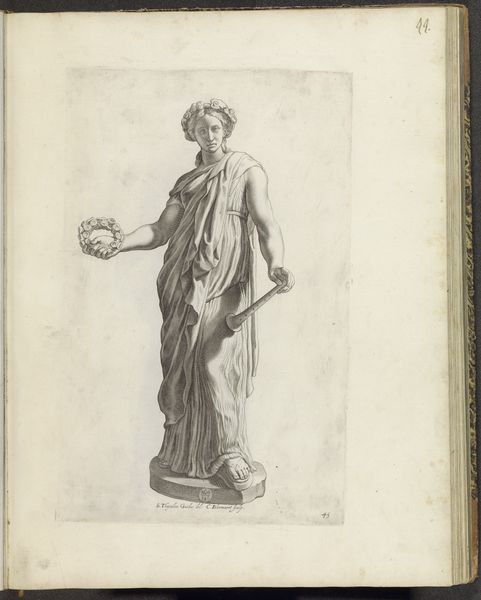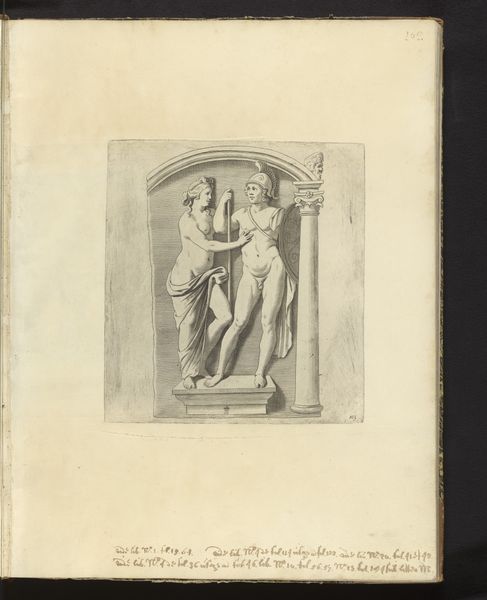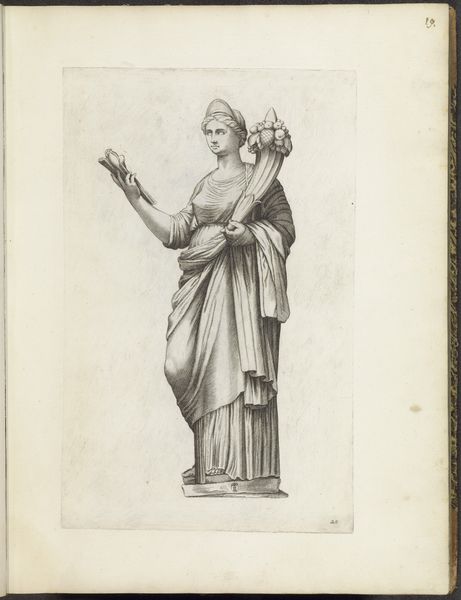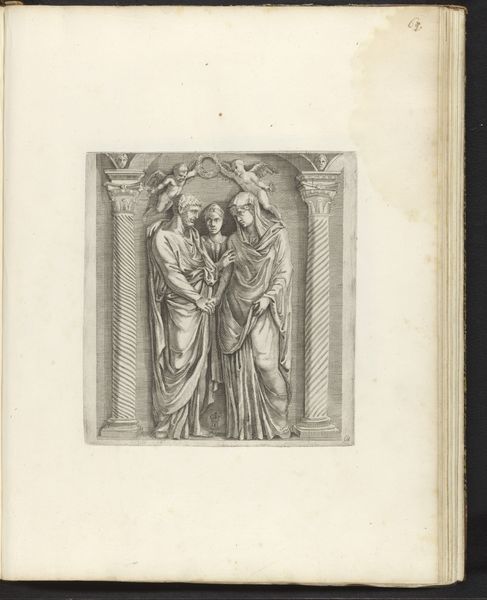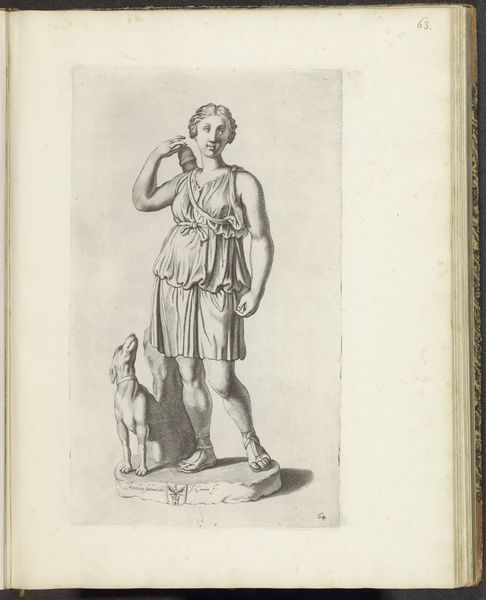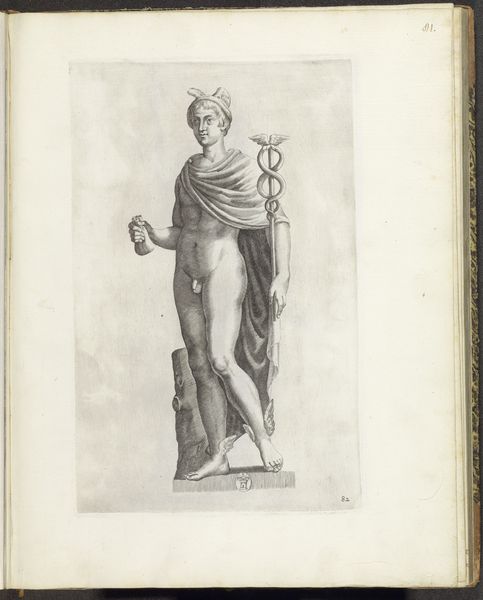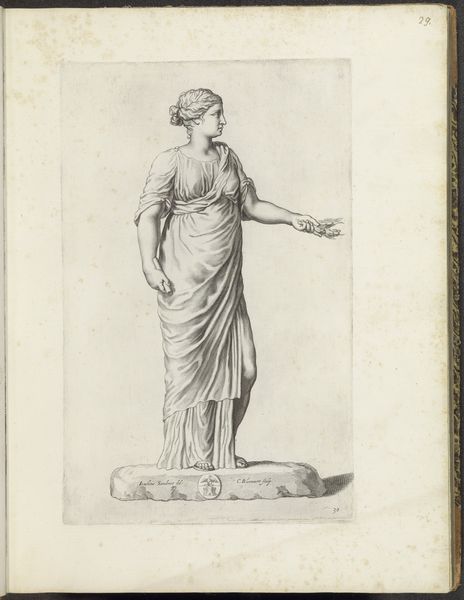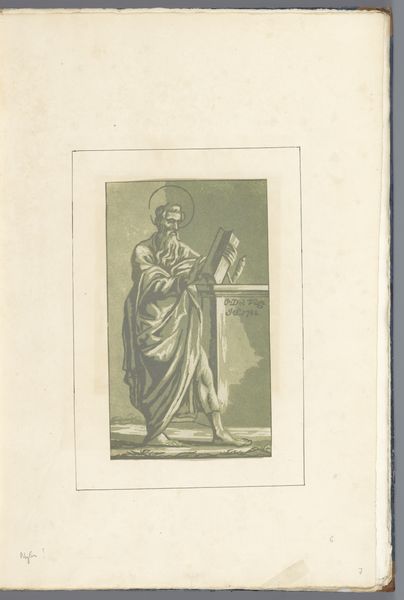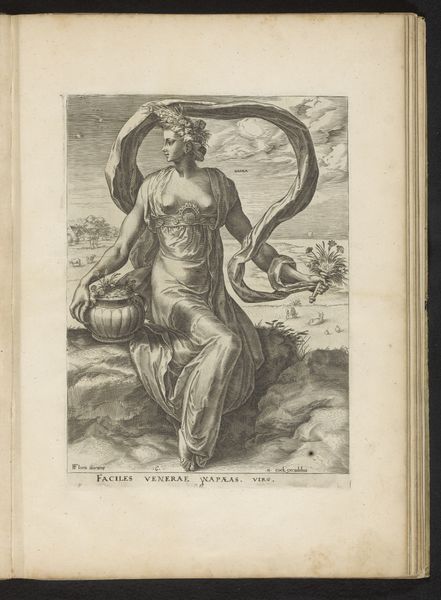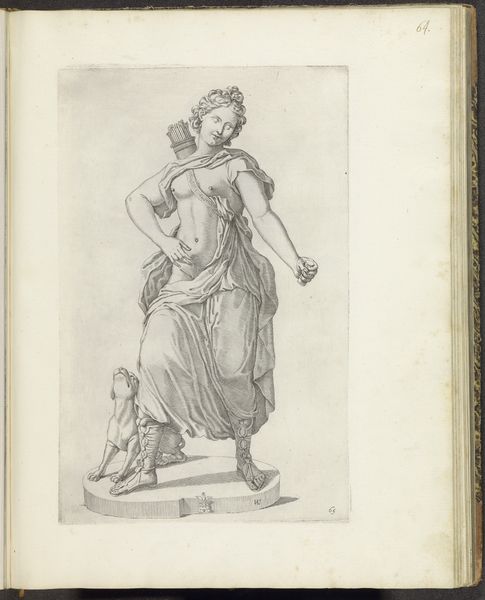
print, relief, engraving
#
portrait
#
baroque
# print
#
relief
#
classical-realism
#
figuration
#
history-painting
#
engraving
Dimensions: height 245 mm, width 218 mm
Copyright: Rijks Museum: Open Domain
Reinier van Persijn created this engraving titled 'Bas-reliëf met Ceres' in the Netherlands in the mid-17th century. It shows the Roman goddess of agriculture, Ceres, holding a cornucopia and a small child. The image of Ceres is rooted in classical antiquity, but its meaning shifted in the context of the Dutch Golden Age. In a republic enriched by trade, agriculture was seen as a source of national pride and virtue. Ceres, as a symbol of abundance, embodied the values of a society that saw itself as blessed with prosperity. The Rijksmuseum, where this print is housed, was founded in the 19th century to showcase Dutch national heritage. It continues to shape our understanding of art by curating and interpreting these images within a larger narrative of Dutch history. To understand this image more fully, we might look at how the Dutch Republic saw itself in relation to its classical past. We can consult historical texts, literature, and other artworks that circulated at the time.
Comments
No comments
Be the first to comment and join the conversation on the ultimate creative platform.
